#Archduchess Isabella
Text

[Isabella of Parma] was a talented observer of others, and she made it her overriding ambition from early on to win over every member of the imperial family. We know just how assiduously and intelligently she practiced this art from the roughly two hundred letters to Archduchess Maria Christina that have come down to us.
These letters betray an almost obsessive concern with gaining the undivided love and attention of Maria Christina, the same age as Isabella and the object of her consuming passion. She had already started writing to her future sister-in-law before they met, doing all she could to create a climate of friendly intimacy. She called her ma soeur fidèle, my faithful sister, and declared her tender admiration for the empress and her love of Germany. Following her arrival in Vienna, the correspondence gradually intensified into ever more effusive expressions of attachment and devotion. The stream of letters did not abate even when the two women were seeing each other almost every day at court. Letters were considered the “mirror of the soul”; they provided an outlet for what could not be said in the strictly ceremonialized everyday life of the court. “My adorable sister,” Isabella writes repeatedly, “my goddess! my heart! my angel! Venus! I am mad with love for you; I love you to distraction; I worship you!” She then speaks of her lover’s “devilish” character, her cruelty and disloyalty. Much remains incomprehensible to later readers, as when Isabella refers to shared experiences and secrets (“yesterday’s adventure”), makes ironic allusions, or uses cover names. Time and again she declares herself deeply wounded, “soaked in tears,” because Maria Christina has paid her insufficient attention, and demands proofs of her love; she then begs her to forgive her jealousy. She tries to arrange secret rendezvous for the two of them, refers to their joint “marriage” and a mysterious “wedding present,” calls herself Maria’s amant, lover, or mari, husband, and refers to the two of them—alluding to operas they had attended—as Orpheus and Eurydice, Zerbin and Laurette, or Linon and Lisette. She airs the greatest intimacies without any sense of shame, drastically showing today’s readers just how low the threshold of embarrassment was in such matters. At any rate, what is invoked in these letters is far more than Platonic infatuation: “I cover you all over with my kisses,” she exclaims, “I kiss everything you let me kiss,” or even—in German in the original rather than the usual French—“I kiss your archangelic ass.” Maria Christina’s reactions have not survived, but they appear to have been more reserved, since Isabella calls her a saint and writes: “Despite your saintliness, I kiss you with all my soul, so that they may be said to be pious kisses, for what comes from the soul is purely spiritual and not of this earth, although I love all that is down-to-earth.” On the rare occasions when Isabella mentions her husband, then it is as an unwelcome intrusion, the “rival” of her beloved. Among the essays composed by Isabella there is a short, sarcastic “Treatise on Men”: the most useless creatures in all the world, good for nothing other than selfishness, more irrational than animals, elevated by God above women only so that male flaws would cause female virtues to shine all the more brightly. If girls had not been persuaded that they were useless, they would cope very well without their menfolk. The devil had a hand in play when men were created, women had no choice but to make the best of a bad lot.
Stollberg-Rilinger, Barbara (2020). Maria Theresa: The Habsburg Empress in her Time (translation by Robert Savage)
#happy pride day~#isabella of parma archduchess of austria#archduchess maria christina of austria duchess of teschen#historian: barbara stollberg rilinger#Maria Theresa: The Habsburg Empress in her Time#historicwomendaily
37 notes
·
View notes
Photo

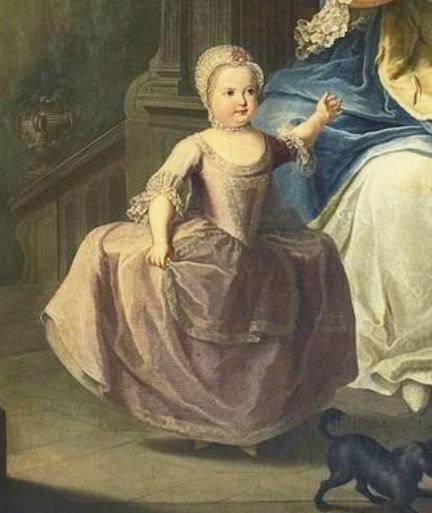
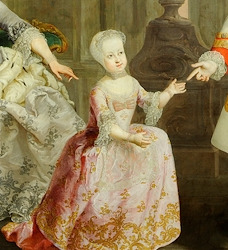


Portraits of Archduchess Maria Theresa of Austria, daughter of Joseph II and Isabella of Parma.
31 notes
·
View notes
Text

2 notes
·
View notes
Text







florence + the machine lyrics x colors x textiles in art — yellow/gold
Rabbit Heart (Raise It Up) – Lungs // Portrait of Princess Maria Clementina Sobieska – William Mosman 👑 Only If For a Night – Ceremonials // Isabelle de Bourbon, Infanta of Parma – Jean-Marc Nattier 👑 Over the Love – Over the Love // Portrait of Archduchess Maria Maddalena of Austria – Frans Pourbus the Younger 👑 Over the Love – Over the Love // Portrait of Isabella Charlotte of Nassau-Dietz as Flora – Lancelot Volders 👑 King – Dance Fever // Portrait of Konstancja Krystyna Wielopolska – Pierre Mignard I 👑 Girls Against God – Dance Fever // Portrait of Barbara of Portugal, Queen of Spain – Jean Ranc 👑 Heaven Is Here – Dance Fever // Princess Louisa Maria Teresa Stuart – Alexis Simon Belle
#florence + the machine lyrics x colors x textiles in art#rabbit heart#lungs#lungs album#only if for a night#ceremonials#over the love#king#king florence#girls against god#heaven is here#dance fever#florence + the machine#florence and the machine#fatm#gold#yellow#art#art history#lyrics#lyric art
238 notes
·
View notes
Photo

Archduchess Isabella Peridot Tiara ♕ Private Collection
102 notes
·
View notes
Text


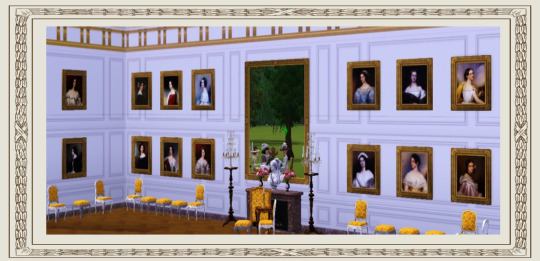
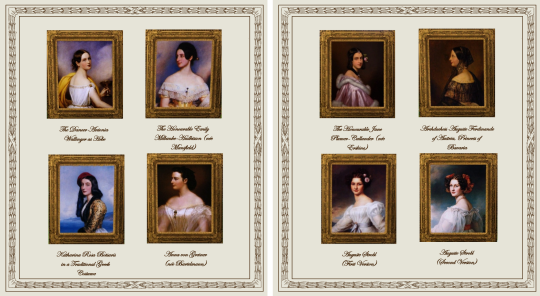


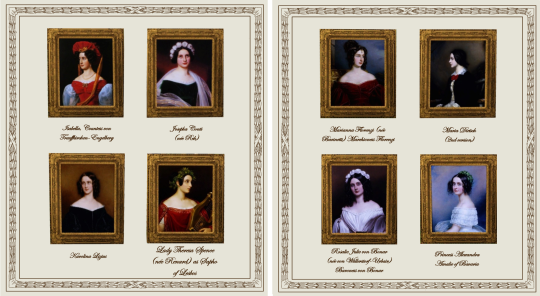
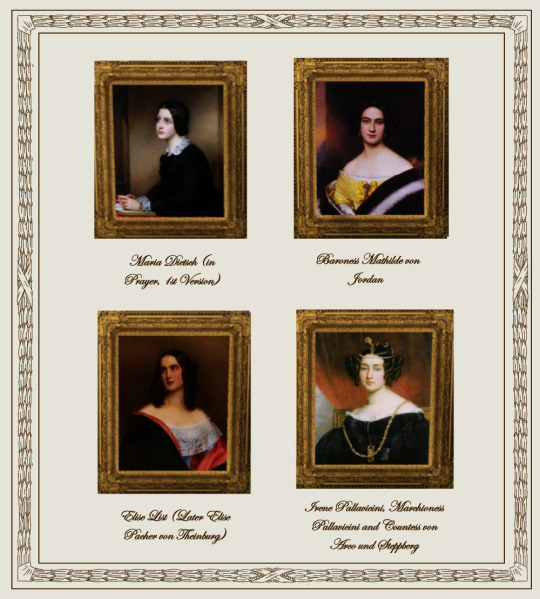

King Ludwig Ist's Gallery of Beauties.
A retexture by La Comtesse Zouboff — Original Mesh by @thejim07
The Gallery of Beauties (Schönheitengalerie) is a collection of 38 small portraits of the most beautiful women from the nobility and middle classes of Munich, Germany painted between 1827 and 1850 (mostly by Karl Joseph Stieler, appointed court painter in 1820) and gathered by Ludwig I of Bavaria in the south pavilion of Nymphenburg Palace in Munich. Two additional ones were created by Friedrick Drück and one portrait was stolen in the XXth century and remains missing.
The set includes all the 38 portraits, with the original frame swatches, fully recolorable. The portraits are of:
Friederike von Gumppenberg (later Baroness von Gumppenberg).
Amalia von Schintling.
Amalie Maximilianovna von Krüdener (née von Lerchenfeld) Baroness von Krüdener.
Anna Hillmayer.
Anna von Greiner (née Bartelmann)
Antonietta Cornelia Vetterlein.
Archduchess Auguste Ferdinande of Austria, Princess of Bavaria.
Auguste Strobl (first version).
Auguste Strobl (second version).
Baroness Mathilde von Jordan.
Carlotta von Boos zu Waldeck (née von Breidbach-Bürresheim) Baroness von Breidbach-Bürresheim.
Caroline Maximiliana Maria von Holnstein (née von Spiering) Countess von Holnstein aus Bayern
Elise List (later Elise Pacher von Theinburg
Eliza Rosanna James (née Gilbert), Known ss Lola Montez.
Helene Kreszenz Sedlmayr.
Irene Pallavicini, Marchioness Pallavicini and Countess von Arco un Steppberg.
Isabella, Countess von Traufkirchen-Engelberg.
Jane Elizabeth Digby, Later Baroness von Venningen.
Josepha Conti (née Reh).
Karolina Lizius.
Katharina Rosa Botsaris in a Traditional Greek Costume.
Lady Theresa Spence (née Renard) as Sapho of Lesbos.
Maria Dietsch (In prayer, first version).
Maria Dietsch (second version).
Marianna Florenzi (née Bacinetti) Marchioness Florenzi.
Marie Friederike Franziska Hedwig of Prussia, Crown Princess of Bavaria.
Maximiliane Borzaga.
Nanette von Kaulla.
Princess Alexandra Amalie of Bavaria.
Caroline von Oettingen-Wallerstein (later Countess von Waldbott-Bassenheim.
Regina Daxenberger.
Rosalie Julie von Bonar (née von Wüllerstorf-Urbair) Baroness von Bonar.
Sophie Friederike Dorothea Wilhemine, Archduchess of Austria (née Princess of Bavaria).
The Actress Charlotte von Hagn-Schwab as Thekla in Schiller's "Wallenstein".
The Actress Friederica Katharina "Willhemine" Sulzer.
The Dancer Antonia Wallinger as Hebe.
The Honourable Emily Mikbanke-Huskisson (née Mansfield)
The Honourable Jane Plumer-Callander (née Erskine)
Found under decor > paintings for 540§
Retextured from the "Portrait of Balsasarre Castiglione" found here
-------------------------------------------------------
CC shown here:
Wall paneling, mirror, girandole and floor by @thejim07
Fireplace by @hydrangeachainsaw
Chairs, stools, flower vases, bust, table, fireplace screen and candelabra by @joojconverts
Torchere by @martassimsbookcc
(Btw excuse my sims' reflection having tea)

Drive
(Sims3Pack | Package)
(Useful tags below)
@joojconverts @ts3history @ts3historicalccfinds @deniisu-sims @katsujiiccfinds
-------------------------------------------------------
#the sims 3#ts3#sims 3 cc#portrait#s3cc#sims 3#sims 3 download#sims 3 decor#joseph karl stieler#Munich#germany#nymphenburg#wall decor
85 notes
·
View notes
Text
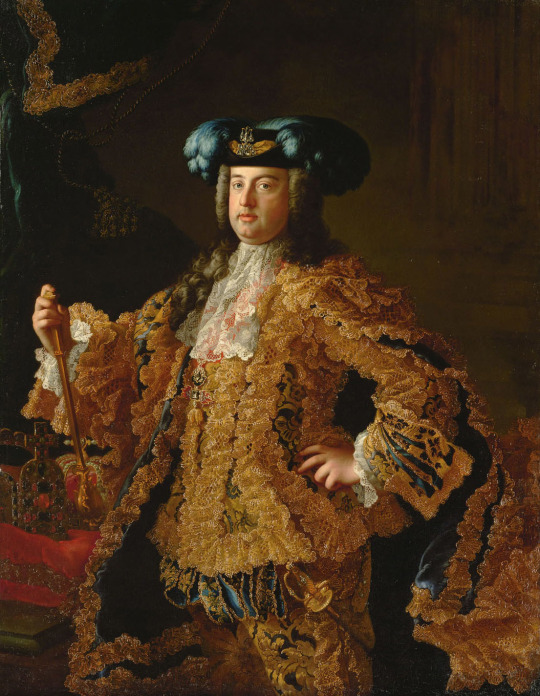
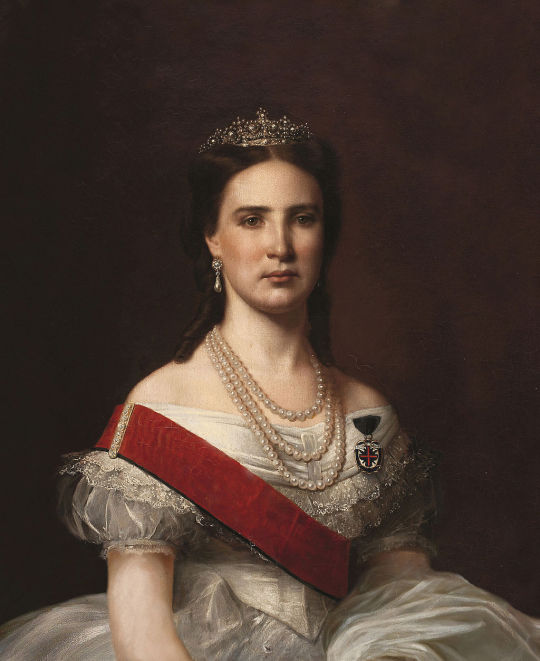
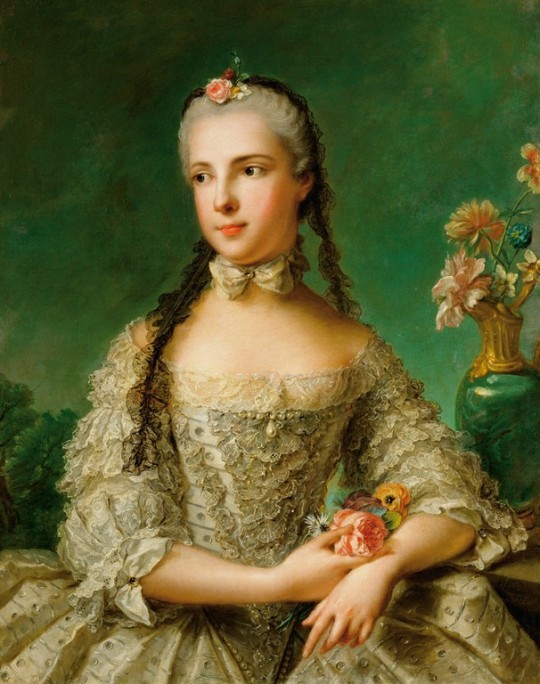

Franz Stephan, Holy Roman Emperor (1708-1765): He has several titles of his own, but he was mainly Maria Theresa's consort.
Charlotte of Belgium, Empress of Mexico (1840-1927): Archduchess of Austria and Empress of Mexico by marriage to Maximilian.
Princess Isabella of Parma (1741-1763): First wife of Joseph II, daughter of the Duke of Parma. She also may have possibly had a romantic affair with her sister in law.
Maria Josepha of Bavaria (1739-1767): Second wife of Joseph II, their marriage was cold. After her death, Joseph swore off marriage.
Also, Rudolph II did not marry and thus did not have a consort. But I do encourage you to Google his mistress Kateřina Stradová.
#best habsburg bracket#bonus round#bet you wish that you'd voted for Franz Joseph now#because you know who'd be in this poll then
18 notes
·
View notes
Text
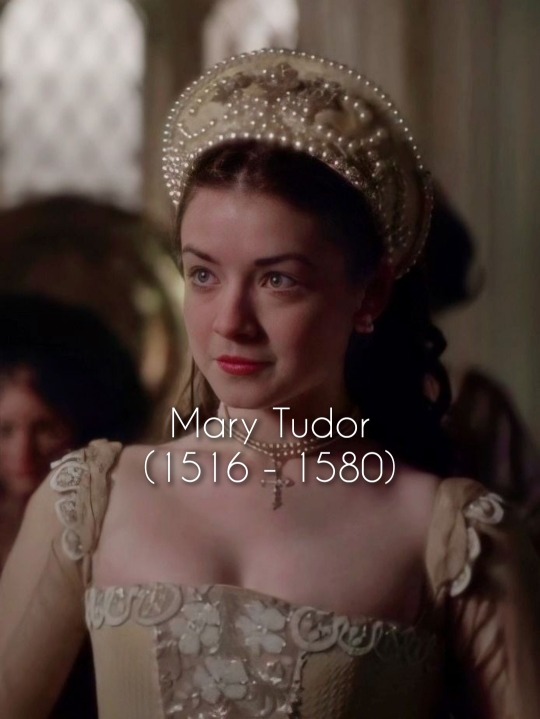

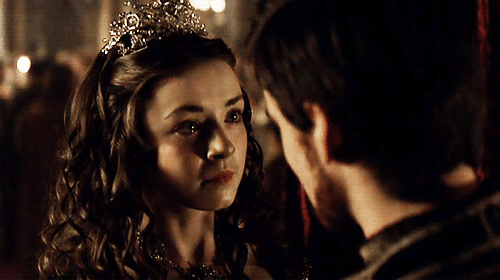

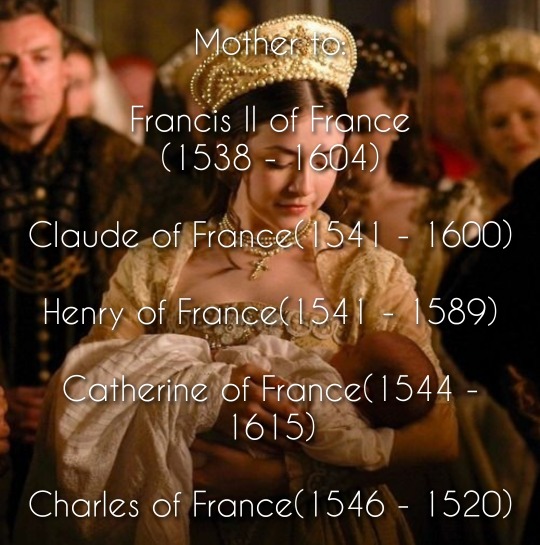

A happier life for Henry VIII's children. Part: 1.
Mary was the first surviving child of King Henry VIII of England from his first marriage to the Spanish princess Catherine of Aragon. The princess knew that she was not her parents' only child - all of her siblings died shortly after birth. The birth of a living and healthy child was a great happiness for King Henry and Queen Catherine, even though the child was a girl. That is why she became the king's favorite daughter. When she was 12 years old, her father decided to divorce her mother. Catherine did not resist the king's decision for a long time, but accepted the inevitable and agreed to the divorce with favorable terms. For this, the king, as promised, retained for Mary the status of princess and allowed the former spouse to communicate with his daughter. After the divorce for Mary little changed, she continued to grow up in the love of her father and mother, often visited both parents. The princess did not like her father's second wife, but did not show it. Anne Boleyn did not meet Henry's expectations, so he sent her to a convent under strict supervision. The king also wanted to declare Princess Elizabeth illegitimate, but Mary stood up for her sister and convinced her father not to do so. Soon the king married Jane Seymour, and a year after the wedding she gave him a long-awaited son, whom the happy father named Edward. In honor of this joyous event, Henry organized a grand feast that lasted for a whole week. In the same year, Princess Mary married Prince Henry, heir to the French throne. Before meeting his future wife, the dauphin had a love affair with Diana de Poitiers, but when he first saw his betrothed, he fell madly in love with her. Henry immediately severed all ties with Diana and was faithful to his wife until his death. The marriage of Mary and Henry turned out to be very happy. They had five children:
Francis II of France(1538 - 1604). Nicknamed "The Peacemaker" for the foreign policy calm during his reign. During his reign, France did not wage a single war. Husband of Helena of Austria, they had a good relationship. In marriage 7 children were born: Mary, Louis XIII, Anne, Henry, Christina, Philip, Gaston.
Claude of France(1541 - 1600). Queen of Spain. In 1556 she became the wife of Philip II. The spouses loved each other despite the big difference in age. They had 5 children: Philip III, Isabella, Joanna, Ferdinand, Diego.
Henry of France(1541 - 1589). Duke of Orleans. Was a favorite son for his mother, as from a young age showed a keen interest in religion. And when he became older he decided to devote his life to the service of God. He was not married and had no children.
Catherine of France(1544 - 1615). Archduchess of Austria. Favorite sister of Francis II. Was the second wife of Ferdinand II of Austria. The spouses did not love each other, but respected each other. In marriage 3 daughters were born: Anne, Mary, Eleanor. After the death of her husband returned to her homeland.
Charles of France(1546 - 1620). Duke of Angoulême. Because of his dissolute lifestyle he had conflicts with his mother. He married his cousin Jane, daughter of King Edward VI of England. The married life of Charles and Jane was not happy, because of his constant cheating. The marriage produced 4 children: Gedeon, Charlotte, Michelle and Cesar.
While in France, she did not forget about her family and maintained a close correspondence not only with her parents, but also with her second stepmother, because of the warm and close relationship between them. Before leaving, Mary and Jane had great difficulty convincing the king to bring Elizabeth to the palace so that she would not feel lonely. Henry initially had no paternal feelings for his second daughter, but was later able to develop a warmth for the girl. In 1540, Dauphine learned that her mother had died. She could not come to her funeral, as she was pregnant with her second child, but due to severe stress she had a miscarriage. Because of these events, the princess fell into depression, she did not leave her chambers and hardly ate anything. Her husband was with her all this time and provided as much support as possible, but when he realized that he could not cope, he invited Jane to help. She couldn't stay away and convinced Henry to let her go to Mary. After a few months, Mary recovered and all three returned to England. The king greeted his wife, daughter and son-in-law warmly. And the princess was finally able to honor her mother. She also spent time with her brother and sister because she missed them during the 6 years of absence. When Mary returned to France, she was already pregnant with her third child, and nine months later she gave birth to twins. Five years passed.During this time, Mary and Henry became king and queen of France and had two more children. They successfully ruled the kingdom. Shortly before his death, Henry 8 appointed his eldest daughter as regent under his young son. The queen excelled in her duties as regent and pursued a mild policy toward her subjects. When she realized that Edward was already capable of ruling on his own, she placed the power in his hands and returned to France. In 1559, King Henry of France fell from his horse while hunting and died. Mary mourned the death of her beloved husband for a long time and wore mourning for him for the rest of her life. She warmly remembered the 22 happy years they gave to each other and loved to tell her grandchildren about it. Mary often came to visit her brother, and the two developed a warm relationship. The dowager queen of France died in 1580. She was buried next to her husband Henry II in the Abbey of Saint-Denis.
Source:
Pinterest: Dinastia Tudor & Reyes Católicos, Bit_na
Tumblr: the borgias ITALIA
#history#royal family#royalty#history au#au#royal#henryviii#the tudors#british royal family#16th century#catherine of aragon#anne boleyn#jane seymour#marytudor#house of tudor#tudor dynasty#tudor england
10 notes
·
View notes
Text
Royal Godparents to Royal Godchildren
I did this list back in 2012, and got some great responses. I've updated and edited parts of the list. Again, any corrections and/or adds, message me! Thanks in advance!
When choosing godparents for their children, the parents often chose friends or other relatives. Often in royal circles, royals also pick other royals. Here’s a partial list. (Yes, I know some lists are incompelte as some of these royals’s godchildren are not royals themselves.) If you have any additions, please feel free to message me!
Belgium
King Baudouin I
Princess Marie-Christine of Belgium (1951)
King Leopold III
Princess Beatrix of The Netherlands (1938)
Princess Marie-Astrid of Luxembourg (1954)
King Philippe of The Belgians (1960)
Queen Astrid
Princess Astrid, Mrs. Ferner (1932)
King Albert II
Princess Marie-Esméralda of Belgium (1956)
Queen Paola
Prince Amedeo of Belgium, Archduke of Austria-Este (1986)
King Philippe
Prince Amedeo of Belgium, Archduke of Austria-Este (1986)
Princess Marie Gabrielle de Nassau (1986)
Queen Matilde
Princess Alexia of The Netherlands (2005)
Princess Isabella of Denmark (2007)
Princess Astrid, Archduchess of Austria-Este
Prince Sébastien of Luxembourg (1992)
Prince Amedeo, Archduke of Austria-Este
Princess Elisabeth of Belgium, The Duchess of Brabant (2001)
Princess Claire
Princess Eléonore of Belgium(2008)
Prince Lorentz, The Archduke of Austria-Este
Prince Carl-Johan de Nassau (1992)
Bulgaria
Queen Margarita
Prince Umberto of Bulgaria (1999)
Konstantin-Assen, Prince of Vidin, Duke of Saxony
Infanta Sofia of Spain (2007)
Princess Rosrio
Doña Irene de Todos los Santos Urdangarín y de Borbón (2005)
Denmark
Queen Ingrid
Princess Margaret, Countess of Snowdon (1930)
King Carl XVI of Sweden (1946)
King Christian X
Princess Benedikte of Denmark, Princess of Sayn-Wittgenstein-Berleburg (1944)
Queen Anne-Marie of Greece (1946)
Queen Alexandrine
Princess Benedikte of Denmark, Princess of Sayn-Wittgenstein-Berleburg (1944)
Queen Anne-Marie of Greece (1946)
Princess Dagmar
Queen Anne-Marie of Greece (1946)
Princess Thyra
Princess Astrid, Mrs. Ferner (1932)
King Fredrick IX
King Carl XVI of Sweden (1946)
Queen Margarethe II
King Williem-Alexander of The Netherlands (1967)
Crown Prince Hakon of Norway (1973)
Prince Carl Phillip of Sweden (1979)
Crown Prince Fredrick of Denmark
Count Nikolai af Monzepat (1999)
Countess Ingrid Alexandra Irma Astrid Benedikte von Pfeil und Klein-Ellguth (2003)
Princess Ingrid Alexandra of Norway (2004)
Prince Oscar Carl Olof of Sweden, Duke of Skane (2016)
Crown Princess Mary
Count Henrik af Monzepat (2009)
Konstantin Gustav Heinrich Richard Johannsmann (2010)
Princess Estelle of Sweden (2012)
Prince Christian
Prince Gustav Alberct of Sayn-Wittgenstein-Berleberg (2023)
Princess Marie
Princess Josephine of Denmark (2011)
Princess Caroline-Mathilde
Princess Benedikte of Denmark, Princess of Sayn-Wittgenstein-Berleburg (1944)
Princess Elisabeth
Theodor Christian Emmanuel Rosanes af Rosenborg (2009)
Princely Family of Lieiningen
Princess Alexandra
Princess Alexandra Charlotte Ulrike Maryam Virgina of Hanover (1999)
Princely Family of Hanover
Princess Sophie of Hanover
Prince Edward, The Duke of Edinburgh (1964)
Princely Family of Hesse
Prince Philipp
Count Friedrich Richard Oscar Jefferson von Pfeil und Klein-Ellguth (1999)
Princely Family of Waldeck and Pyrmont
Princess Elisabeth
Princess Beatrix of The Netherlands (1938)
Princely Family of Liechtenstein
Prince Constantin
Prince Georg Antonius of Liechtenstein (1999)
Princess Margaretha
Archduke Imre of Austria (1985)
Princess Louise of Belgium (2004)
Princely Family of Monaco
Prince Albert
Baron Jean-Leonard Taubert-Natta (1974)
Pierre Rainier Stefano Casiraghi (1987)
Louis Robert Paul Ducruet (1992)
Pauline Grace Maguy Ducruet (1994)
Raphaël Casiraghi Elmaleh (2013)
Princess Charlene
Raphaël Casiraghi Elmaleh (2013)
Princess Caroline of Hanover
Louis Robert Paul Ducruet (1992)
Pauline Grace Maguy Ducruet (1994)
Princess Stephanie
Andrea Albert Pierre Casiraghi (1984)
Charlotte Marie Pomeline Casiraghi
Princess Alexandra Charlotte Ulrike Maryam Virgina of Hanover (1999)
Baroness Elisabeth Anne de Massy
Princess Stephanie of Monaco, Countess of Polinac (1965)
The Netherlands
Queen Juliana
King Carl XVI of Sweden (1946)
Queen Anne-Marie of Denmark (1946)
King Williem-Alexander
Count Claus-Casmir van Orange-Nassau, Jonkheer van Amsberg (2004)
Countess Zaria of Oranje-Nassau (2006)
Princess Estelle of Sweden (2012)
Prince Constantijn
Princess Catharina-Amalia of The Netherlands, The Princess of Orange (2003)
Countess Luana of Orange-Nassau, Jonkvrouwe van Amsberg (2005)
Prince Friso
Countess Eloise van Orange-Nassau, Jonkvrouwe van Amsberg (2002)
Princess Alexia of the Netherlands (2005)
Norway
King Haakon VII
Princess Ragnhild, Mrs. Lorentzen (1930)
Princess Astrid, Mrs. Ferner (1932)
Queen Anne-Marie of Greece (1946)
Queen Maud
Princess Ragnhild, Mrs. Lorentzen (1930)
Princess Astrid, Mrs. Ferner(1932)
King Olav V
Princess Margriet Francisca of the Netherlands (1943)
King Carl XVI Gustaf of Sweden (1946)
Princess Märtha Louise of Norway (1971)
Crown Princess Martha
Crown Princess Martha
Queen Anne-Marie of Greece (1946)
King Harald
Crown Princess Victoria of Sweden (1977)
Maud Angelica Behn (2003)
Princess Ingrid Alexandra of Norway (2004)
Queen Sonja
Prince Sverre Magnus of Norway (2005)
Crown Prince Hakkon
Maud Angelica Behn (2003)
Prince Christian of Denmark (2005)
Princess Estelle of Sweden(2012)
Crown Princess Mette-Mairt
Prince Christian of Denmark (2005)
Emma Tallulah Behn (2008)
Princess Märtha Louise
Count Friedrich Richard Oscar Jefferson von Pfeil und Klein-Ellguth (1999)
Princess Ingrid Alexandra of Norway (2004)
Princess Ragnhild, Mrs. Lorentzen
Princess Märtha Louise of Norway (1971)
Spain
Queen Victoria Eugenia
Infante Juan, Count of Barcelona (1913)
Doña María del Rosario Cayetana Fitz-James Stuart y Silva, 18th Duchess of Alba de Tormes, Grandee of Spain (1926)
Queen Fabiola of Belgium (1928)
Prince Albert of Monaco (1957)
Felipe, Prince of Austrias (1968)
King Juan Carlos
Don Felipe Juan Froilán de Todos los Santos de Marichalar y Borbón (1998)
Leonor, The Princess of Asturias (2005
Queen Sofia
Leonor, The Princess of Asturias (2005)
King Felipe VI
Princess Sofia Vidinska of Bulgaria (1999)
Doña Victoria Federica de Todos los Santos de Marichalar y de Borbón (2000)
Prince Vincent of Denmark (2011)
Infanta Elena
Don Juan Valentín de Todos los Santos Urdangarín y de Borbón (1999)
Prince Achileas-Andreas of Greece (2000)
Infanta Christina
Don Miguel de Todos los Santos Urdangarín y de Borbón (2002)
Iñaki, the former Duke of Palma de Mallorca
Don Miguel de Todos los Santos Urdangarín y de Borbón (2002)
Infanta Maria Cristina
Princess Marie-Christine of Belgium (1951)
Infanta Cristina, Duchess of Palma de Mallorca (1965)
Princely Family of Sayn-Wittgenstein-Berleburg
Gustav, 7th Prince of Sayn-Wittgenstein-Berleburg
Count Friedrich Richard Oscar Jefferson von Pfeil und Klein-Ellguth (1999)
Konstantin Gustav Heinrich Richard Johannsmann (2010)
Prince Vincent of Denmark (2011)
Carina, Princess of Sayn-Wittgenstein-Berleberg
Countess Athena af Monzepat
Princess Nathalie of Sayn-Witentein-Berleburg
Countess Ingrid Alexandra Irma Astrid Benedikte von Pfeil und Klein-Ellguth (2003)
Princess Benedikte
Prince Joachim of Denmark (1969)
Princess Madeleine of Sweden, Duchess of Hälsingland and Gästrikland (1981)
Royal Family of Italy
Prince Carlo, Duke of Castro
Princess Joesphine of Denmark (2011)
Greece
Queen Olga
Prince Phillip, Duke of Edinburgh (1921)
Prince George
Queen Anne-Marie of Greece (1946)
King Constantine II
Prince Constantijn of the Netherlands (1969)
Prince William of Wales (1982)
Crown Prince Pavlos
Prince Christian of Denmark (2005)
Prince Sverre Magnus of Norway (2005)
Princess Alexia
Don Pablo Nicolás Sebastián de Todos los Santos Urdangarín y de Borbón (2000)
Countess Ingrid Alexandra Irma Astrid Benedikte von Pfeil und Klein-Ellguth (2003)
Princess Isabella of Denmark (2007)
Emma Tallulah Behn (2008)
Prince Nikolas
Count Friedrich Richard Oscar Jefferson von Pfeil und Klein-Ellguth (1999)
Grand Ducal Family of Luxembourg
Grand Duchess Charlotte
Princess Marie-Astrid of Luxembourg (1954)
Grand Duchess Josephine-Charlotte (1927-2005)
Princess Astrid of Belgium, Archduchess of Austria-Este (1962)
Prince Felix (1893-1970)
Prince Albert of Belgium (1934)
Princess Margaretha of Luxembourg (1957)
Prince Jean of Luxembourg (1957)
Princess Marie-Gabrielle (1925)
Grand Duke Henri (1955)
Prince Jean (1957-)
Prince Félix of Luxembourg (1984)
Grand Duchess Joesphine-Charlotte
Princess Marie-Esméralda of Belgium (1956)
Princess Astrid of Belgium, Archduchess of Austria-Este (1962)
Grand Duke Henri
King Albert II of Belgium (1934)
Princess Marie-Gabrielle of Luxembourg (1986)
Guillaume, Hereditary Grand Duke
Prince Sébastien of Luxembourg (1992)
Prince Paul-Louis of Luxembourg (1998)
Prince Noah of Nassu (2007)
Princess Ariane of the Netherlands (2007)
Princess Alexandra
Prince Gabriel de Nassau (2006)
Prince François Henri Louis Marie Guillaume of Luxembourg (2023)
Prince Louis
Prince Charles Jean Philippe Joseph Marie Guillaume of Luxemborug (2020)
Princely Family of Sayn-Wittgenstein-Hohenstein
Prince Georg of Sayn-Wittgenstein-Hohenstein
Countess Ingrid Alexandra Irma Astrid Benedikte von Pfeil und Klein-Ellguth (2003)
Sweden
King Gustaf V
Princess Ragnhild, Mrs. Lorentzen (1930)
King Carl XVI Gustaf of Sweden (1946)
Princess Benedikte of Denmark, Princess of Sayn-Wittgenstein-Berleburg (1944)
Prince Carl of Sweden & Norway (1861-1951)
Princess Ragnhild, Mrs. Lorentzen (1930)
Princess Astrid, Mrs. Ferner (1932)
Prince Eugen of Sweden & Norway (1865-1947)
Princess Astrid, Mrs. Ferner (1932)
Princess Ingeborg of Sweden & Norway (1878-1958)
Princess Ragnhild, Mrs. Lorentzen (1930)
Princess Astrid, Mrs. Ferner (1932)
Princess Margaretha of Sweden & Norway
Princess Benedikte of Denmark, Princess of Sayn-Wittgenstein-Berleburg (1944)
Princess Margaretha of Luxembourg (1957)
Princess Margaretha (1899-1977)
Prince Jean of Luxembourg(1957)
Princess Ingeborg
Princess Benedikte of Denmark, Princess of Sayn-Wittgenstein-Berleburg (1944)
King Carl XVI Gustav
Hakon, Crown Prince of Norway (1973)
Crown Princess Victoria
Prince Constantine Alexios of Greece & Denmark (1998)
Baroness Madeleine von Dincklage (1999)
Princess Catharina-Amalia of the Netherlands (2003)
Princess Ingrid Alexandra of Norway (2004)
Prince Christian of Denmark (2005)
Princess Eléonore of Belgium (2008)
Princess Leonore Lilian Maria of Sweden, The Duchess of Gotland (2014)
Prince Alexander Erik Hubertus Bertil of Sweden, The Duke of Södermanland (2016)
Prince Carl Phillip
Princess Estelle of Sweden, The Duchess of Ostergotland (2012)
Prince Nicolas of Sweden, Duke of Ångermanland (2015)
Princess Madeleine
Prince Oscar Carl Olof of Sweden, The Duke of Skane (2016)
Prince Gabriel Carl Walter of Sweden, The Duke of Dalarna (2017)
Princess Christina
Prince Joachim of Denmark (1969)
Princess Désirée, Baroness Silfverschiöld
Crown Princess Victoria of Sweden (1977)
Prince Bertil, Duke of Halland
Queen Anne-Marie of Greece (1946)
Prince Carl Phillip of Sweden (1979)
Princess Birgitta
Prince Carl Phillip of Sweden (1979)
Princess Margaretha
Princess Märtha Louise of Norway (1973)
Mr. Gustaf Magnusson
Prince Nicolas Paul Gustaf of Sweden, The Duke of Angermanland (2015)
Mr. Victor Magnusson
Prince Alexander Erik Hubertus Bertil of Sweden, Duke of Södermanland (2016)
United Kingdom
Queen Victoria
Prince Albert Edward Kamehameha of Hawaiʻi (1858–1862)
Prince Alfred Alexander William Ernest Albert of Edinburgh, later Hereditary Prince of Saxe-Coburg and Gotha (1874–1899)
Princess Alice Mary Victoria Augusta Pauline of Albany (1883–1981)
Prince Edward Albert Christian George Andrew Patrick David of York, later Edward VIII (1894–1972)
Prince Albert Frederick Arthur George of York, later George VI (1895–1952)
Grand Duchess Olga Nikolaevna of Russia (1895–1918)
Princess Victoria Alexandra Alice Mary of York (1897–1965)
Prince Louis Francis of Battenberg, later 1st Earl Mountbatten of Burma (1900–1979)
King George V
Queen Elizabeth II (1926)
Queen Mary
Queen Elizabeth II (1926)
Princess Margriet Francisca of the Netherlands (1943)
Queen Anne-Marie of Greece (1946)
Mary, Princess Royal and Countess of Harewood
Princess Elizabeth Alexandra Mary of York, later Elizabeth II (1926)
Prince Edward George Nicholas Patrick Paul, The Duke of Kent (1935)
Prince George, The Duke of Kent
Princess Astrid, Mrs. Ferner (1932)
King Edward VIII
Princess Margaret of York (1930)
Princess Alice, Countess of Athlone
Princess Beatrix of The Netherlands (1938)
Prince Arthur, Duke of Connaught
Princess Elizabeth of York (1926)
Princess Mary, Viscountess Lascelles
Princess Elizabeth of York (1926)
The Princess Victoria
Princess Margaret, Countess of Snowdon (1930)
Princess Ragnhild, Mrs. Lorentzen (1930)
King George VI
Princess Ragnhild, Mrs. Lorentzen (1930)
Queen Elizabeth, The Queen Mother
Prince Alexander of Yugoslavia (1924)
Gerald David Lascelles Esq (1924–1998)
Princess Astrid of Norway (1932)
Princess Alexandra of Kent (1936)
Princess Sofia of Greece, later Queen of Spain (1938)
Princess Irene of the Netherlands (born 1940)
Prince William Henry Andrew Frederick of Gloucester (1941–1972)
Princess Benedikte of Denmark, Princess of Sayn-Wittgenstein-Berleburg (1944)
Prince Richard of Gloucester, later Duke of Gloucester (1944)
Princess Anne of Edinburgh (1950)
The Hon (Robert) Jeremy Lascelles (1955)
Queen Elizabeth II
David Henry George Lascelles, 8th Earl of Harewood (1950)
Princess Fredrike of Hanover (1954)
David Albert Charles Armstrong-Jones, Viscount Linley (1961)
Edwina Victoria Louise Brudenell (1961)
James Robert Bruce Ogilvy (1964)
Princess Theodora of Greece & Denmark (1983)
Princess Margaret, Countess of Snowdon
King Charles III (1948)
Prince Phillip, Duke of Edinburgh
Crown Princess Margareta, Custodian of the Crown of Romania (1948)
Norton Louis Philip Knatchbull, 8th Baron Brabourne (1947)
Princess Maria Tatiana of Yugoslavia (1957)
Prince Christopher of Yugoslavia (1960)
George Windsor, Earl of St. Andrews (1962)
Prince Philippos of Greece and Denmark (1986)
King Charles III
The Hon. Nicholas Knatchbull (1964-1979)
The Hon. Timothy Knatchbull (1964)
Marina Victoria Alexandra Ogilvy (1966)
Pavlos, Crown Prince of Greece (1967)
India Amanda Caroline Hicks (1967)
Lord Nicholas Windsor (1970)
Alexander Patrick Gregers Richard Windsor, Earl of Ulster (1970)
The Hon. Edward John Hugo Tollemache (1975)
Peter Mark Andrew Phillips (1977)
The Hon. Nicholas Louis Charles Norton Knatchbull (1981)
Hugh Grosvenor, The Duke of Westminster (1991)
Lord Frederick Charles Wellesley(1992)
Princess Maria-Olympia of Greece & Denmark (1996)
Samuel David Benidict Chatto (1996)
Kumar Padmanabh Singh, Crown Prince of Jaipur (1998)
Diana, Princess of Wales
The Lady Edwina Louise Grosvenor (1981)
Alexandra Victoria Edwina Diana Knatchbull (1982)
Prince Philippos of Greece and Denmark (1986)
Jakie James Warren (1986)
The Lady Mary Luise Wellesley (1986)
Edward Edmund Maximilian George Windsor, Lord Downpatrick (1988)
Jack William Bartholomew (1989)
Benjamin Peter Marcus Samuel (1989)
Domenica Marianna Tertia Lawson (1995)
The Prince William, The Prince of Wales
Prince Constantine-Alexios of Greece & Denmark (1998)
Mia Grace Tindall (2014)
The Prince Andrew, The Duke of York
Zara Anne Elizabeth Phillips Tindall (1981)
Prince Henry, The Duke of Sussex (Prince Harry, 1984)
The Prince Edward, The Duke of Edinburgh
The Lady Rose Gilman (1980)
Lady Ella Mountbatten (1996)
Count Nikolai af Monzepat (1999)
Sophie, The Duchesss of Edinburgh, The Countess of Wessex
Lady Alexandra Mountbatten (1998)
Anne, The Princess Royal
Philip, Hereditary Prince of Hohenlohe-Langenburg (1970)
Haakon, Crown Prince of Norway (1973)
Prince Peter of Yugoslavia (1980)
Princess Eugenie, Mrs. Jack Brooksbank
Maud Daphne Marina Windsor (2013)
Zara Anne Elizabeth Tindall
Prince George Alexander Louis of Wales (2013)
David Armstrong-Jones, The 2nd Earl Snowdon
Princess Beatrice Elizabeth Mary, Mrs. Edoardo Mapelli (1988)
The Lady Sarah Chatto
The Lady Rose Gilman (1980)
Prince Henry of Wales (1984)
Lady Louise Alice Elizabeth Mary Mountbatten-Windsor (2003)
Princess Michael of Kent
Princess Maria Chiara Amalia Carola Louise Carmen of Bourbon-Two Sicilies (2005)
Katharine, Duchess of Kent
Prince Edward, The Duke of Edinburgh (1964)
Princess Alexandra of Kent, The Hon. Lady Ogilvy
George Windsor, The Earl of St Andrews (1962)
The Prince William of Wales (1982)
James Robert Bruce Ogilvy
Princess Eugenie Victoria Helena, Mrs. Jack Brooksbank (1990)
#Royal Godparents#British Royals#Belgian Royals#Spanish Royals#Danish Royals#Swedish Royals#German Royals#Greek Royals#Defunct Monarchies#Dutch Royals#monegasque princely family
15 notes
·
View notes
Text

Juan Pantoja de la Cruz (Spanish, 1553-1608)
Portrait of the Archduchess Infanta Isabella Clara Eugenia, ca.1600
Meadows Museum, Southern Methodist University
#Juan Pantoja de la Cruz#netherlandish#spanish netherlands#art#spanish princess#infanta#infanta isabella clara eugenia#1600s#fine art#1500s#classical art#european art#europe#european#oil painting#fine arts#mediterranean#europa#spanish#hispanic#latin#spanish art#spanish artist#archduchess#royal#noble#nobility#aristocrat#aristocracy#southern europe
21 notes
·
View notes
Text


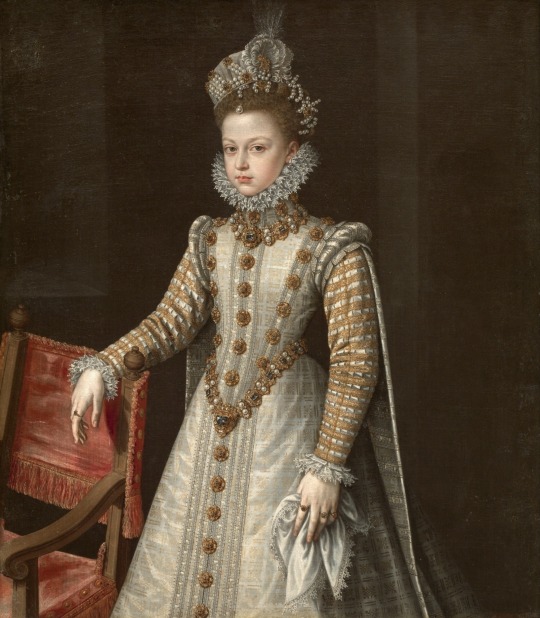

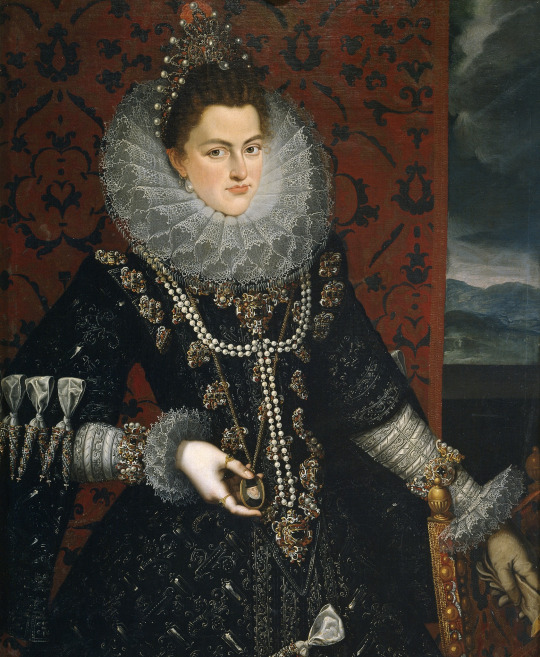

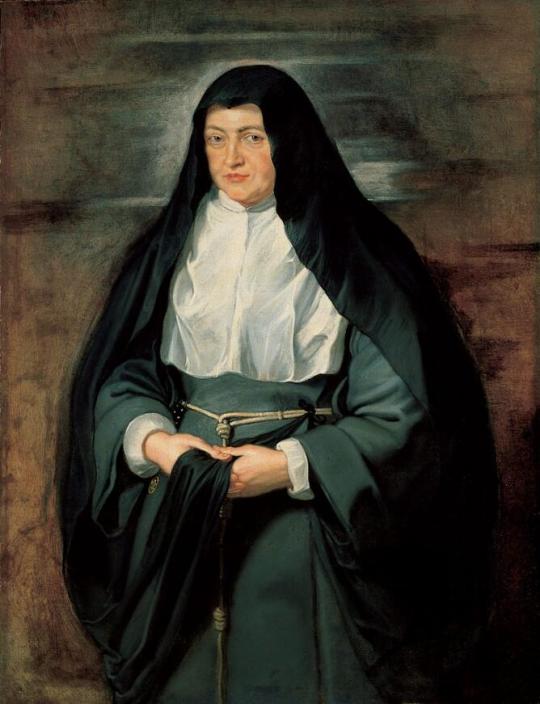

The Infanta Isabella Clara Eugenia (Spanish, 1566-1633): Sovereign of the Netherlands, Duchess of Lothier, Brabant, Limburg, Luxemburg, and Guelders, Margravine of Namur, Countess Palatine of Burgundy, Countess of Flanders, Artois and Hainaut. [source]
1. Attributed to Alonso Sánchez Coello (1531-1588) and Workshop, Isabella Clara Eugenia and Catharina, Daughters of Philip II, King of Spain, c. 1569-70, oil on canvas; The Royal Collection Trust, Green Drawing Room, Buckingham Palace.
2. Alonso Sánchez Coello (Spanish,1531-1588), The Infantas Isabel Clara Eugenia and Catalina Micaela, circa 1575, oil on canvas, Museo del Prado, Madrid.
3. Alonso Sánchez Coello (Spanish, 1531-1588), Infanta Isabella Clara Eugenia, 1577, oil on canvas, Museo del Prado, Madrid.
4. Alonso Sánchez Coello, The Infanta Isabella Clara Eugenia and Magdalena Ruiz, 1586, oil on canvas, Museo Nacional del Prado, Madrid.
5. Juan Pantoja de la Cruz (Spanish, 1553-1608), The Infanta Isabel Clara Eugenia, 1598-99, oil on canvas, Museo del Prado, Madrid.
6. Frans Pourbus the Younger (Flemish, 1569-1622), The Infanta Isabella Clara Eugenia, Archduchess of Austria, c. 1598-1600, oil on canvas.
7. Peter Paul Rubens and Workshop (Flemish, 1577-1640), Portrait of Archduchess Isabella Clara Eugenia, Spanish Regent of the Low Countries, as a Nun, 1625, oil on canvas.
8. Anthony van Dyck (Flemish, 1599-1641), The Infanta Isabella Clara Eugenia, c. 1630, oil on canvas, Walker Art Gallery.
Infanta Isabella Clara Eugenia (Spanish, Segovia, 1566 - 1633, Brussels) was the daughter of Philip II of Spain and his third wife, Elizabeth of Valois, who died after a miscarriage when the Infanta was only two. Her sister Catalina Micaela was one year younger.
She became the sovereign of the Spanish Netherlands in the Low Countries and the north of modern France with her husband, Archduke Albert VII of Austria. She was one of the most powerful women in Europe at the time. The couple had no children. She joined the Sisters of St. Clare order after her co-regent's death.
#infanta isabel clara eugenia#spanish royalty#powerful women#alonso sánchez coello#juan pantoja de la cruz#frans pourbus the younger#peter paul rubens#anthony van dyck#16th century#17th century#european history
34 notes
·
View notes
Text

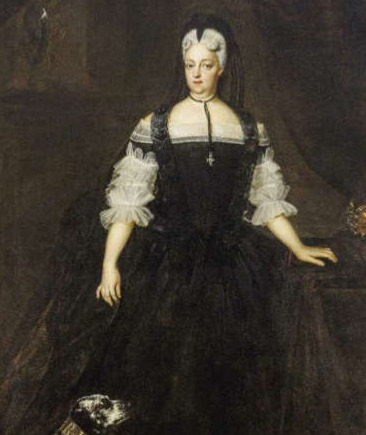
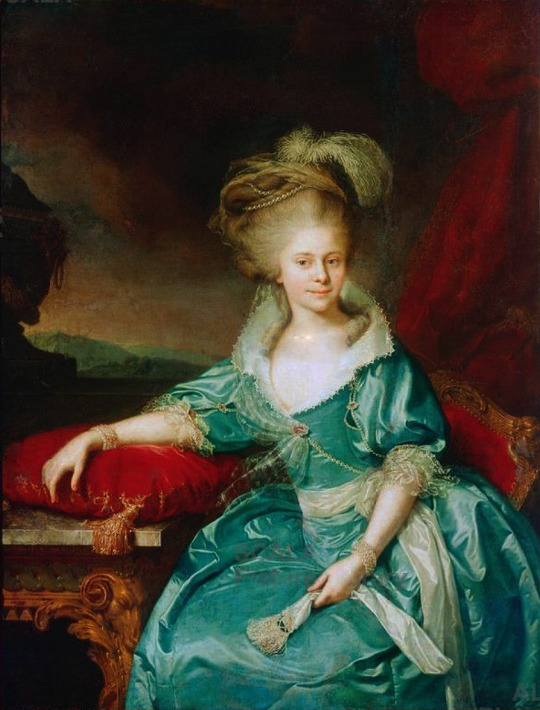
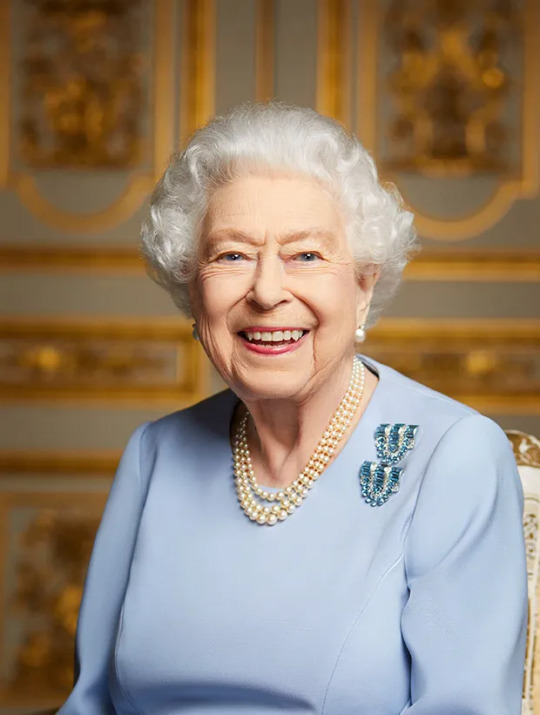

Royal Birthdays for today, April 21st:
Sancho VI, King of Navarre, 1132
Wilhelmine Amalie of Brunswick, Holy Roman Empress, 1673
Elisabeth of Württemberg, Archduchess of Austria, 1767
Elizabeth II, Queen of the United Kingdom, 1926
Isabella of Denmark, Countess of Monpezat, 2007
#elizabeth ii#queen elizabeth ii#princess isabella#Elisabeth of Württemberg#elisabeth of wurttemberg#Wilhelmine Amalie of Brunswick#sancho vi#long live the queue#royal birthdays
16 notes
·
View notes
Text
Thread about Joanna of Castile: Part 4: The birth of her children
Juana of Castile had six children. Here is a list of her children and their birthdates:
Eleanor of Austria: Born on November 15, 1498.
Charles V, Holy Roman Emperor: Born on February 24, 1500.
Isabella of Austria: Born on July 18, 1501.
Ferdinand I, Holy Roman Emperor: Born on July 10, 1503.
Mary of Austria: Born on June 18, 1505.
Catherine of Austria: Born on February 14, 1507

Eleanor of Austria was born a year after her uncle's death, the precedent heir to the Spanish throne, John, Prince of Asturias, and four months after her mother's sister's death, Isabella of Aragon, Queen of Portugal.

Clearly disappointed that their first child was a girl, Eleanor, Philip
required Juana to pay for the infant’s nursemaids and attendants.
“The Archduchess may provide for the places in the household of this child because it is a daughter,” Philip asserted. “When God grants us a son, I shall provide for his household.”
God did grant them a son. Juana gave birth to Charles in March 1500, much to Philip’s joy: fireworks raced across the sky, church bells rang, and Philip gave Juana a magnificent and costly emerald as a reward. Their third child, prudently named Isabella after Juana’s mother, was born in July 1501. Because Juana was pregnant with Isabella when news of Prince Miguel’s death and her subsequent inheritance reached her, she and Philip were unable to start for Spain until the autumn of 1501, a couple of months before her twenty-second birthday. For the death of Prince Miguel at Granada on 20 July 1500, five months after the birth of Charles, at Ghent, would convert Juana into heir apparent, and her lost homeland into her future and destination.
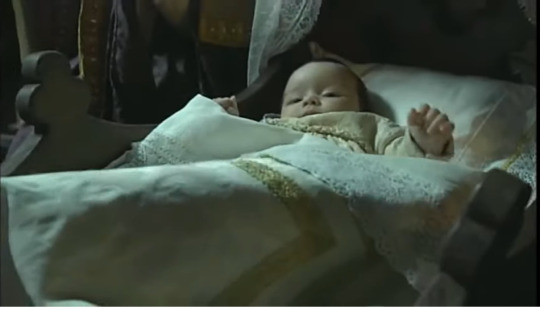

On 15 July 1501, she gave birth, in Brussels, to her third child, Isabella (later queen of Denmark).
A new Spanish envoy, Juan Rodríguez de Fonseca, bishop of Córdoba, reported that Juana seemed eager to serve her parents and was widely thought to be “very sensible (cuerda) and very level-headed (asentada).” Opinion was divided as to whether she should do more to promote Spanish interests.


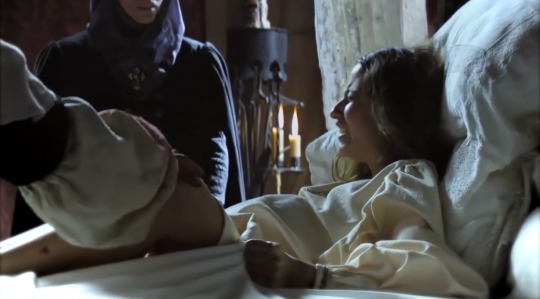

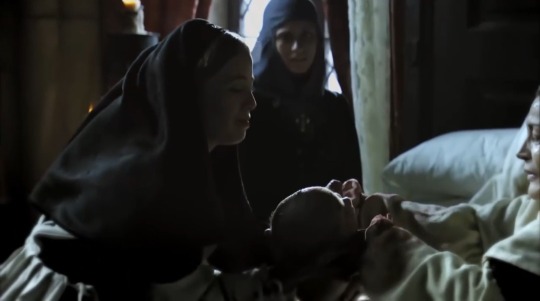
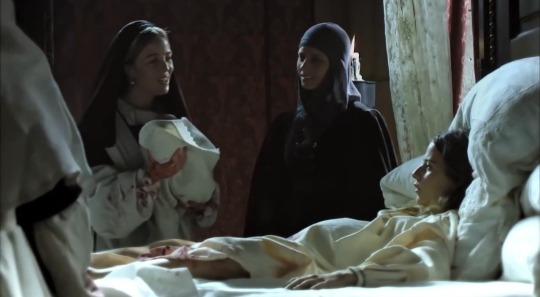



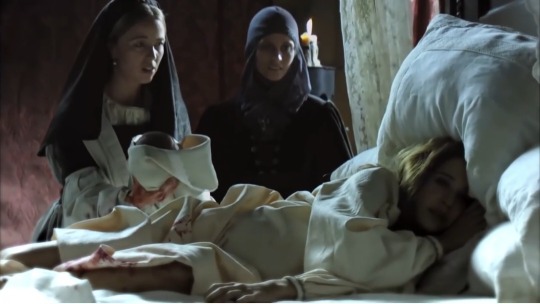
On July 10, 1503, Juana gave birth to her fourth child, Ferdinand I, Holy Roman Emperor, in Alcalá de Henares, Spain.
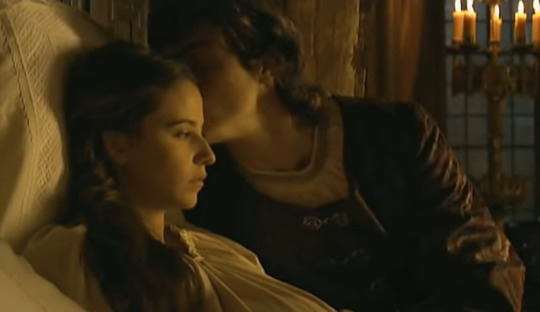
On 15 September, feverish and in pain, the queen gave birth to a
third daughter. Marie, the later Mary of Hungary, was baptized on 20
September at the church of Notre Dame de Sablon. Juana’s seclusion and captivity had long deprived her of her children and, during those rare moments when Philip tried to use them to soften her stance towards him, she had found it unsettling. But she now sought to maximize her time with them. Early in November, Philip left Brussels for Mechelen and Antwerp on the first leg of the second Spanish journey. Juana set out separately, intending to travel through Ghent and Bruges, and, Querini noted, she “has had all the children brought from Malines [Mechelen] and takes them with her to enjoy their company …”

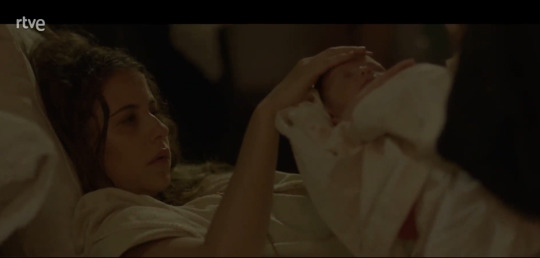

Juana gave birth to her last child and daughter, Catherine of Austria in Torquemada, a town in the province of Palencia, Spain. Catherine was born on February 14, 1507, in the Torquemada Castle. When she was pregnant with her last child, Catherine of Austria, Joanna's mental instability had already worsened. She gave birth while she was in the town of Torquemada, and it is said to have been a difficult and complicated birth.
20 notes
·
View notes
Photo
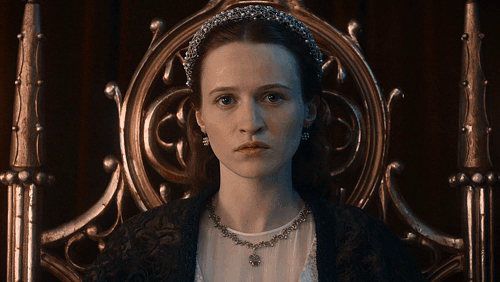




MARY OF BURGUNDY, THE RICH
Duchess of Burgundy, countess of Flanders, and archduchess of Austria, who fought to save her land from France and preserved what was to become the modern country of Belgium.
In Mary of Burgundy's days, Burgundy encompassed the area surrounding Dijon, Flanders, Picardy, and Brabant. It bordered France, Austria, and the English territories in the northeast part of continental Europe. The future of Burgundy was of utmost importance in the ongoing struggle for power between England and France, as well as in the many smaller conflicts throughout central and northern Europe. Mary's father, who was to be remembered as Charles the Bold, was the count of Charolois. Her grandfather, known as Philip the Good, reigned as the duke of Burgundy. Mary's mother was Isabelle of Bourbon , the second wife of Charles. His first wife Catherine de France had died young, with no children; Mary of Burgundy was therefore the sole heir to a large and rich territory.
Since Charles had no male heirs, potential marriages with Mary of Burgundy were plotted almost from the day of her birth on February 13,1457. Her entrance into the world was celebrated in a grand style, and her baptism at the cathedral of Coudenberg was considered "the greatest magnificence ever seen for a girl." This elegance may have been due to the political position of the child, or it simply may have been expected of the stylish House of Burgundy. Whatever the reason, the festivities lasted an entire day, and Louis of France, later to rule as King Louis XI, was appointed as Mary's godfather. Mary's grandmother, Isabella of Portugal (1397–1471), filled the role of godmother. Gifts were brought by representatives from across Europe, including some from a number of cities which were in rebellion against Duke Philip the Good at the time.
Mary of Burgundy spent most of her childhood at the ducal castle of Ten Waele at Ghent. She enjoyed an affectionate relationship with her father, even though he was almost constantly away from her. Especially after 1465, when Charles became the duke of Burgundy, he was personally involved in controlling and governing the cities of his territory. He also developed a flair for conquering new cities, and military operations kept him occupied for months at a time. Isabelle of Bourbon died when Mary was eight years old, and the girl was raised primarily by Lady Hallewijn, the wife of the duke's chief steward. Lady Hallewijn was a constant companion and loyal attendant to Mary throughout her life. Several cousins and other children from noble families lived with the heiress as playmates during her childhood. Mary's great-aunt (possibly Agnes of Burgundy) was responsible for arranging the series of governesses that educated the young lady. Not much is known about Mary's education, but it is clear that she could speak French, Flemish, and English. She enjoyed reading fables and Roman histories, and may have had some training in political philosophy. Her later actions as reigning duchess suggest that she was prepared early in life to govern.
Mary developed a keen interest in hunting, riding, and other outdoor sports, as well as in gardening. She cared for her falcons as if they were children; later in life, her husband would express surprise at Mary's insistence on keeping the birds in the bedroom, even within a few days of their wedding. Mary's personal seal was a picture of herself on horseback with a falcon on her wrist. She had a complete court of attendants from her infancy, including a dwarf named Madame de Beauregard.
Mary soon made her choice among the many suitors for her hand by selecting Archduke Maximilian of Austria, the future Holy Roman Emperor Maximilian I, who became her co-ruler. The marriage took place at Ghent on 19 August 1477, when she was 20 years old, while he was two years younger. Mary's marriage into the House of Habsburg initiated two centuries of contention between France and the Habsburgs, a struggle that climaxed with the War of the Spanish Succession bethween 1701 and 1714.
When they had time, the couple indulged themselves with dancing, hunting, music and the love for animals. Mary tried to teach him iceskating, which he struggled to master. They read romances together. Contrary to the custom of the time, Mary and Maximilian shared the same private quarters and bedroom. Mary nursed their children herself and used to dine with merchants from Dijon. She entusiastically cheered for her husband during tournaments, in which he exceled in jousting, not just in feats of strength but also in the luxury he lavished on the equipments, horses, accessories and ornaments. At first, they talked to each other in Latin. With Maximilian by her side, Mary's position became stronger, politically and militarily. Although he came with no money nor army, nor support from the Empire, and no prior experience in governance, his competence in military matters and his prestige as the son of an emperor boosted the stability of her territories. He took over the war effort, concerning both military and financial details.
In 1482, a falcon hunt in the woods near Wijnendale Castle was organised by Adolph of Cleves, Lord of Ravenstein, who lived in the castle. Mary loved riding and was hunting with Maximilian and knights of the court when her horse tripped, threw her in a ditch, and then landed on top of her, breaking her back. She died several weeks later on 27 March from internal injuries, having made a detailed will. She was buried in the Church of Our Lady in Bruges on 3 April 1482. She was pregnant at the time.
Maximilian was devastated. She had initially hidden the extent of her injury to calm him down. When he continued to display uncontrollable grief, she had to force him out of her chamber so that she could discuss matters of the state with her vassals, concerning which she asked them to keep their loyalty oath to him and their children. Maximilian was not present when she said her last words.
#mary of burgundy#house of habsburg#habsburg#maryandmaximilliam#duchyofburgundy#historicalwomen#history#european history#royal women
28 notes
·
View notes
Note
Not just limited to the Wittelsbachs and Habsburgs, but wondering since there was so many marriages between closely related couples, were there examples of look-alike couples? If Queen Victoria had married another first cousin Prince George, Duke of Cambridge now that would be a total look-alike couple.
Just grab any Bourbon couple lol. Off the top of my head: Francesco of Bourbon-Two Sicilies, Count of Trapani and Archduchess Maria Isabella of Austria-Tuscany. Married or uncle and niece? If you thought "both" you guessed right!

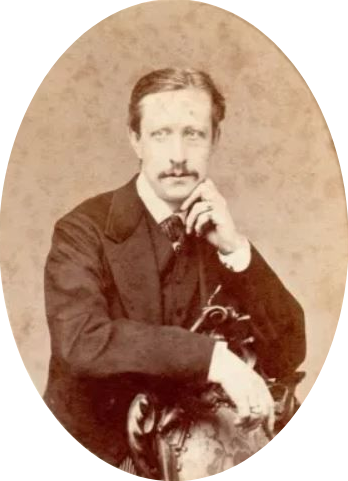

Another couple that comes to my mind is Prince Philip of Saxe-Coburg and Gotha and Princess Louise of Belgium.

They were first cousins once removed (so not as closely related as the couple above) but I think their profiles were pretty similar:
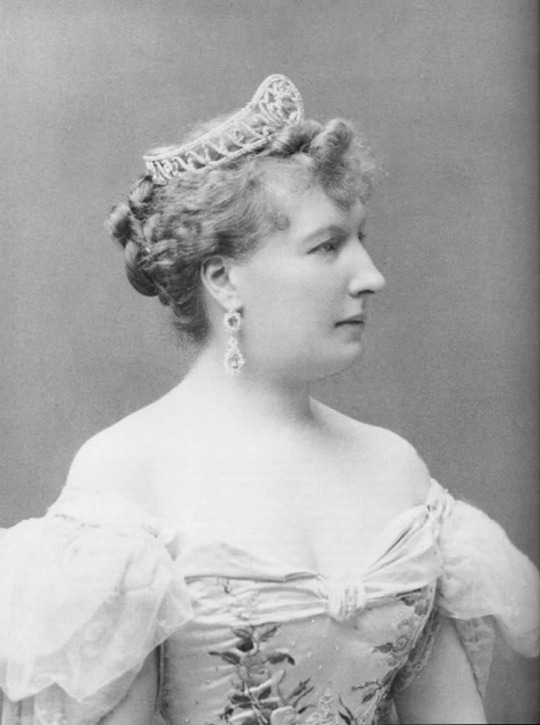

Feel free to add your fav/least fav look-alike endogamous couple! (???)
#prince francesco of bourbon two sicilies count of trapani#maria isabella of austria-tuscany countess of trapani#prince philip of saxe-coburg and gotha#louise of belgium princess of saxe-coburg and gotha#asks
5 notes
·
View notes
Text

Chère Eurydice
J'aurais pleuré autant qu'Orphée dans l'idée seule que vous êtes mortelle.
(I would have cried as much as Orpheus just thinking that you are mortal.)
Archduchess Maria Christina of Austria (1742 - 1798) and Princess Isabella of Parma (1741 - 1763)
8 notes
·
View notes